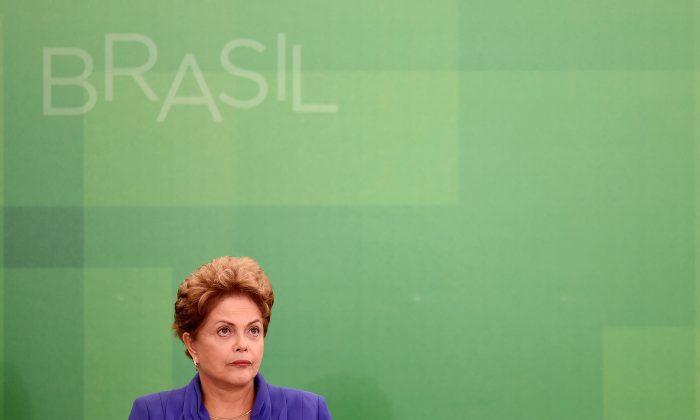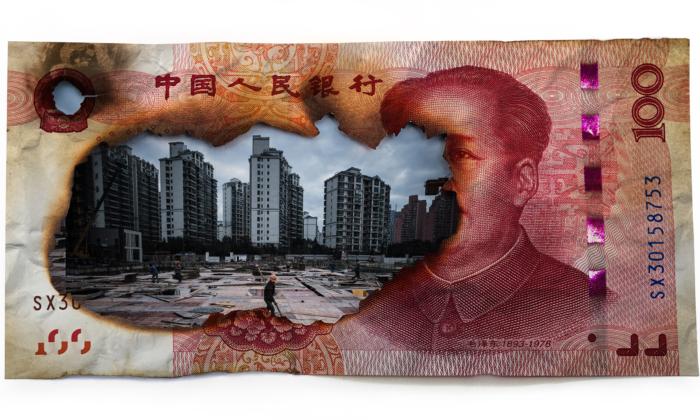When Brazil’s largest and most valuable company saw a corruption scandal threaten its financial health, it called on China for help. China was happy to provide needed funds, as it has been doing throughout Latin America in recent years.
The bail out of energy giant Petroleo Brasileiro SA (Petrobras) is the most recent example of how China has leveraged its financial aid in Latin America to gain political clout while acquiring valuable resources and new markets.
Petrobras has been in dire straits. Prior to last Friday’s surge on news of the financing provided by China, its foreign shares on the New York Stock Exchange were down 55 percent in the last 12 months.
Even before the recent oil price collapse, Petrobras was the most debt-burdened energy company in the world with more than $120 billion in borrowing.
The corruption investigation embroiling Petrobras led to a national political scandal and the resignation of its CEO. Last month the company’s former director of services was arrested on corruption and money laundering, the fourth company executive charged in the investigation.
Due to probable writedowns on contract values resulting from the investigation, the company’s auditors refused to sign off on the 2014 earnings release and financial statements.
Fallout from the scandal could have been disastrous, as without audited financials, Petrobras would be cut off from raising debt or equity from the capital markets.
That’s when China stepped in, with China Development Bank bankrolling the struggling petro giant with a $3.5 billion bridge loan. The loan, announced April 1, is part of a two-year cooperation agreement between the Brazilian state-owned company and China’s infrastructure-financing arm.
The funding is only the most recent financing deal between China and Brazil. According to the China-Brazil Business Council, in the five-year period between 2007 and 2012, China invested in 60 projects worth $69 billion in Brazil. A majority, 47 of the 60 investments, was partially or fully funded by China’s state-owned enterprises (SOEs).
In 2013, state-owned China Construction Bank paid $716 million for a controlling stake in Brazil’s Banco Industrial e Comercial. Today, PetroChina Co. and CNOOC Ltd. have a 20 percent combined stake in Petrobras’s offshore oil field in the Santos Basin south of Rio de Janeiro.
In December 2014, China pledged $250 billion for investment in Latin America over the next 10 years.

Natural Resources
China is the world’s biggest consumer of commodities. South America has huge deposits of minerals, rare-earth metals, and is home to one of the biggest oil reserves outside of the Middle East.
From 2000 to 2011, 86 percent of all Chinese foreign direct investment into Latin America and the Caribbean flowed into the raw materials and energy sectors, according to a study by Enrique Peters, professor at National Autonomous University of Mexico.
Those investments help secure supplies of natural resources. Bilateral trade between China and Latin America grew from $12 billion in 2000 to $289 billion in 2013, according to the IMF. Unsurprisingly, Latin America’s exports to China were primarily copper, iron ore, soybeans, and oil.
Petrobras is South America’s biggest oil producer. Interest payments on the $3.5 billion loan would come from proceeds on oil sales to China. Effectively, China’s loan is risk-free and the interest payments offset some of its petroleum costs.
For nations hitching their wagons to China, there are big risks. Unlike China’s funding of the United States through Treasurys purchases, the loans to Latin America are secured by tangible assets. If companies default, China will take over oil fields—or other properties—which are, in some cases, the only resources of value for these countries.
The effect is even more exaggerated for Venezuela, which is so indebted to China that it practically ships oil for free. And due to the recent oil price drop, Venezuela is now shipping twice the amount of oil as a year ago to service the same debt.

Sphere of Influence
Since the Monroe Doctrine of 1823, United States has viewed North and South America to be under its sphere of influence. President James Monroe regarded any interference in the Americas as acts of aggression against U.S. interests.
The doctrine was aimed at European powers, but today China’s influence in the region is growing. Ideologically, Venezuela and Ecuador have been two of China’s biggest backers in the region, but China’s role as one of Latin America’s biggest financiers means its clout will strengthen.
Days before the company finalized the $3.5 billion loan, Brazilian President Dilma Rousseff said the country would be a founding member of the China-led Asian Infrastructure Investment Bank (AIIB).
Brazil joined the China-led AIIB, and Argentina is expected to follow. China and Brazil are already partners in the New Development Bank, established by the BRICS countries of Brazil, Russia, India, China, and South Africa to encourage co-investment.
Similar to China’s motivations behind the AIIB (partly meant to weaken Japan as Asia’s dominant influence), China’s foray into Latin America could be viewed as leverage to undermine U.S. authority in the region.
Seeking Markets
China wants to leverage its investments to secure a vast new market for goods and products.
The recession in Europe and changing U.S. consumption patterns have slowed growth for Chinese exports in recent years, with China’s factories running below capacity and raw material inventories piling up. These factors contributed to lower-than-desired economic growth results for the Chinese Communist Party, which forecasted official GDP gains of 7 percent in 2015. Independent forecast by London-based Lombard Street Research is more bearish, pegging growth at below 5 percent this year.
To even remotely achieve those results, China must quickly generate demand for its products. The emerging markets of Brazil and Argentina are prime candidates for China.
One such sector for growth is automobiles. China Chery Automobile Co. opened a new factory in Brazil’s São Paulo state late last year. It hopes to produce 50,000 cars in 2015, expanding to 150,000 annually by 2018. Chery has around 100 dealerships in Brazil to sell the cars.
Generally, China sells to emerging markets the goods it feels cannot compete in the United States or Europe. These can include cheap consumer goods, low-quality foods, and technology goods produced by China’s domestic brands, including cars.
Countries receiving financing from China today could incur long-term costs in the future. Mexico and Central America compete directly with China on manufacturing of consumer goods and apparel. Will those industries become at risk?
In Nicaragua, protests erupted late last year over construction of an interoceanic canal that will cut the Central American nation in half. The $50 billion project is funded by a little-known Chinese company that will construct, and then own and operate the 172-mile canal for 50 years.
The project was sponsored by Nicaraguan President Daniel Ortega and fast-tracked through the left-wing Sandinista-controlled Congress. While Ortega promised to create 50,000 new jobs in Nicaragua, thousands of canal laborers will be imported from China. Environmental organizations fear the toll it would take locally, and shoddy Chinese construction methods raise questions on the soundness of the canal itself.
A local Nicaragua landowner told freelancer Nina Lakhani, writing for the Daily Beast, “[Ortega]’s betrayed us, sold us out to the Chinese.”
“Que barbaridad!” [That’s awful!]






Friends Read Free